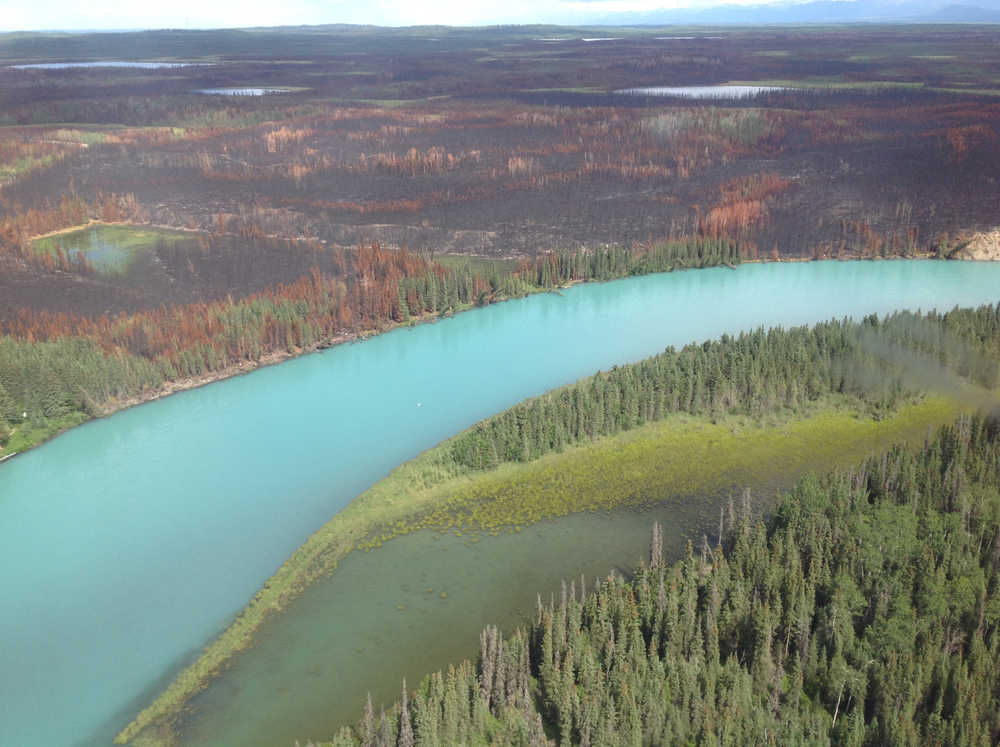There’s a saying in Alaska that when the fireweed stops blooming that the wildfire season is over. This seems to be valid for most but not every year. You see, this saying follows the time of year when nature’s ignitor of wildfires, lightning, becomes less frequent and often disappears entirely as a cooler southwest flow of moisture sets up over the state. We are all too familiar with these typical late July and early August rains. If it were not for the occurrence of human-caused wildfires, this saying would hold true.
Did you know that in areas where wildlands and urban interface, such as we have on the Kenai Peninsula, the number of human-caused wildfires substantially outnumbers those ignited by nature? Anyone who has been here for the past few years has witnessed the fury of extreme fire behavior associated with human-caused fires such as the 2007 Caribou Hills fire, the 2014 Funny River fire, and this year’s Card Street fire. We live amongst vegetation that by its genetic make-up promotes the spread of wildfires — it is extremely flammable, even when green.
Now comes the second saying, “It’s not a matter of if wildfires will happen in Alaska, but when.” We choose to live in this vast and wild place, largely because it is just that — wild. Wild means that natural processes, such as lightning-caused wildfires, help keep the fire-adapted boreal forest in balance by recycling nutrients and creating a mosaic of vegetation types. This mix of grass, herbs, shrub and trees provide healthy habitats for birds, hare, lynx, moose and other creatures of the boreal forest. Wildlife benefit from a variety of vegetation types rather than just a monoculture of dense spruce.
Wildfires often remove the canopy in patches, allowing sunlight to reach the forest floor and promote the growth of species that lay dormant, and were out-competed by the climax tree species. Vegetation co-existing in different seral classes is all part of the successional changes that forests, left to the forces of nature, will eventually go through.
Another benefit of lightning-caused wildfires is the reduction of flammable vegetation (or fuels in fire lingo). Burned-over areas act as barriers to future wildfire spread thus lessening the chance of large scale catastrophic wildfires. An example of this was observed when the regenerating forest from the lightning-caused 2005 King County Creek fire checked spread of the Funny River fire as it moved east toward Skilak Lake. Similarly, a large portion of the 2009 Shanta Creek fire did not burn as the Funny River fire encroached upon that area.
What do we see after the fires come through? Well, initially we see fireweed, beautiful and edible. We also see the regeneration of deciduous aspen, birch and willow that moose love to browse in winter. Blueberry shrubs are more productive few years post fire. But there are dangers afoot in a recently burned area, as we may also see deep ash pits and shallow rooted trees weakened by the loss of the vegetative mat that could topple over with the slightest bit of wind. So please be careful when you are pursuing that perfect patch of morels!
Here we are, once again, near the end of another Alaska wildfire season, and coming into a time of year when we can reflect on the bountiful harvests of summer and fall, much of which would not be possible without balanced ecosystems.
This is also a time to think about how we can help to mitigate the risk of future fire impacts to our property and homes by creating defensible space. Defensible space not only provides a safe place for firefighters to take a stand against wildfire threats, but also allows naturally-ignited wildfires that are not threatening homes or other values to safely be managed as they stimulate vegetation succession. The result: healthy lands that ours and future generations can enjoy, wild areas kept wild, after the fire.
Kristi Bulock is the Fire Management Officer at Kenai National Wildlife Refuge. Find more information about the Refuge at www.fws.gov/refuge/kenai/ or www.facebook.com/kenainationalwildliferefuge.

